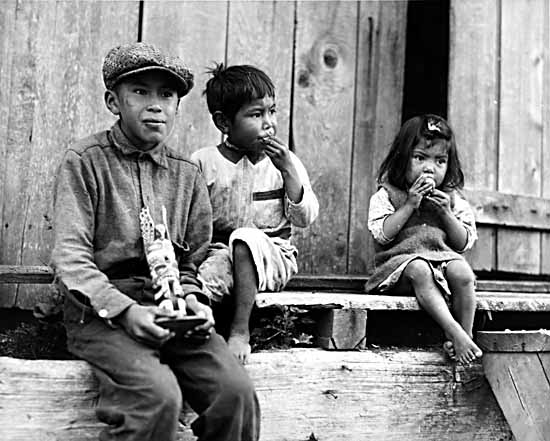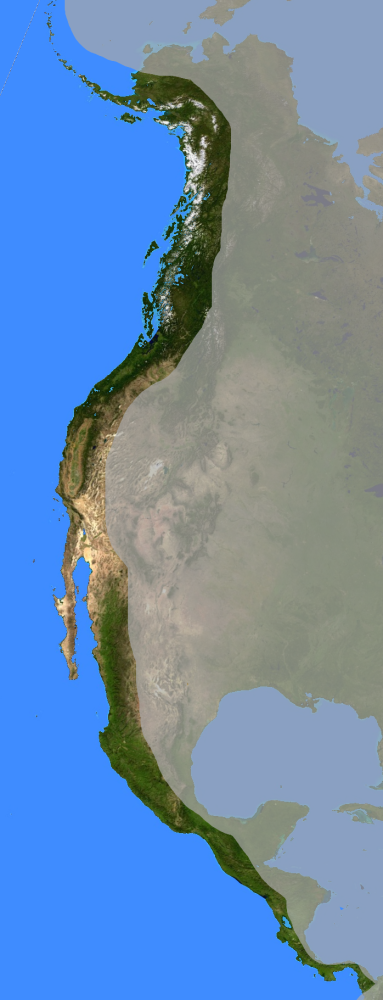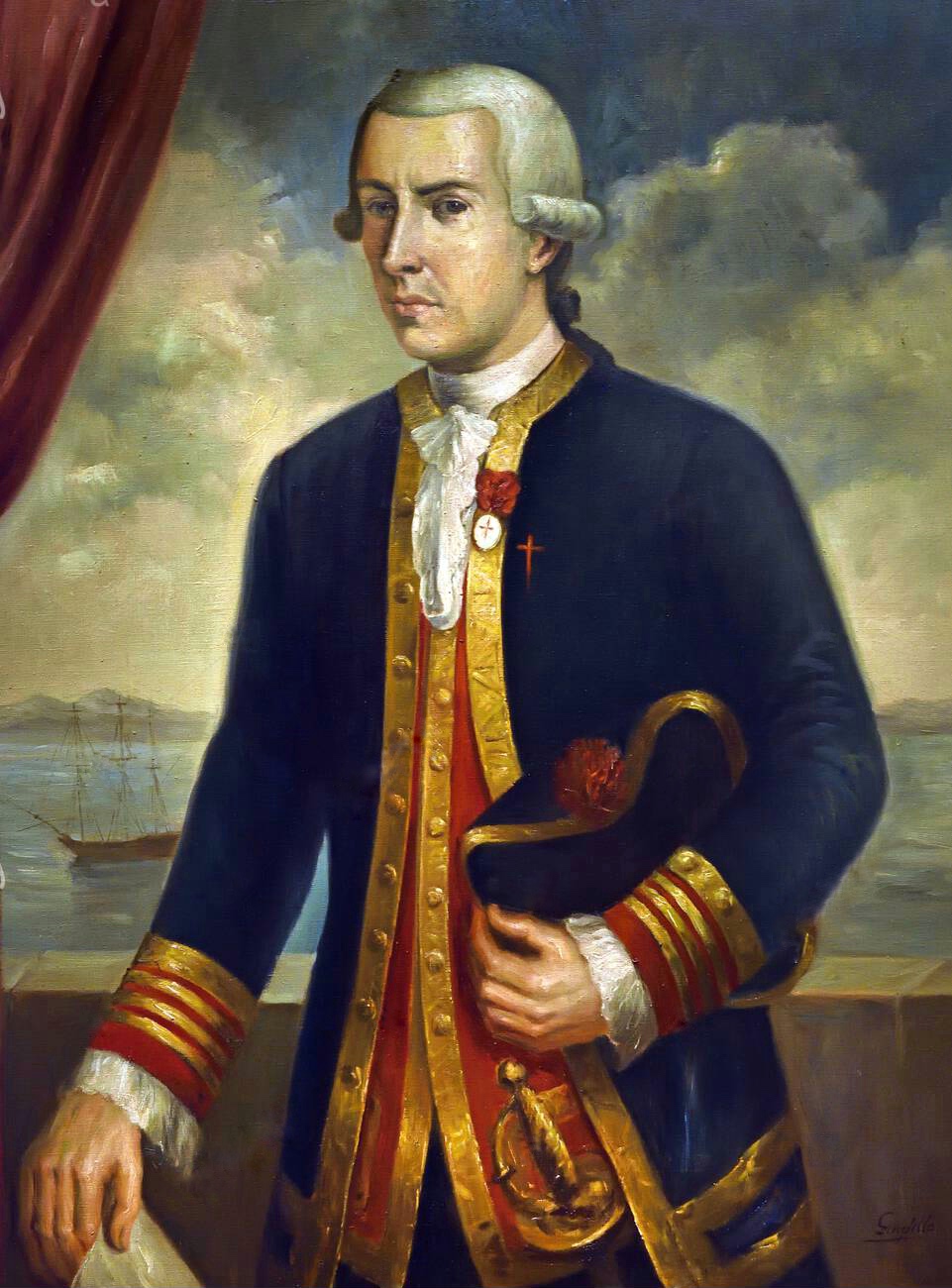|
Fort San Miguel
Fort San Miguel was a Spanish fortification at Yuquot (formerly Friendly Cove) on Nootka Island, just west of north-central Vancouver Island. It protected the Spanish settlement, called Santa Cruz de Nuca, the first colony in British Columbia. History It was first built by Esteban José Martínez in 1789 but dismantled in October of that year. It was then rebuilt and enlarged in 1790 then Nootka Sound was reoccupied by Francisco de Eliza. The fort was essentially an artillery land battery for the defence of the harbour and buildings. The Spanish settlement, called Santa Cruz de Nuca, was the first colony in British Columbia. The fort lay near the home of Maquinna, chief of the Mowachaht group, who are now in the joint Mowachaht/Muchalaht First Nations band government with the Muchalaht at Gold River nearby on Vancouver Island. On May 15, 1789, Martínez chose the location of his fortification at the entrance of Friendly Cove on Hog Island. Work progressed so that on May 26 th ... [...More Info...] [...Related Items...] OR: [Wikipedia] [Google] [Baidu] |
Yuquot
Yuquot , also known as Friendly Cove, is a small settlement of around six people—the Williams family of the Mowachaht band—plus two full-time lighthouse keepers, located on Nootka Island in Nootka Sound, just west of Vancouver Island, British Columbia, Canada. It was the summer home of Chief Maquinna and the Mowachaht/Muchalaht (Nuu-chah-nulth) people for generations, housing approximately 1,500 people in 20 traditional wooden longhouses. The name means "Wind comes from all directions" in Nuu-chah-nulth. The community is located within the Strathcona Regional District but like all Indian Reserve communities is not governed by nor represented in the regional district. The Mowchaht/Muchalaht First Nations are rather part of the Nuu-chah-nulth Tribal Council, which unites the governments of the indigenous communities of the Island's West Coast. The Canadian government declared Friendly Cove a National Historic Site in 1923, with recognition of the significance of the Spanish c ... [...More Info...] [...Related Items...] OR: [Wikipedia] [Google] [Baidu] |
Robert Gray (sea Captain)
Robert Gray (May 10, 1755 – ) was an American Merchant Sea Captain who is known for his achievements in connection with two trading voyages to the northern Pacific coast of North America, between 1790 and 1793, which pioneered the American maritime fur trade in that region. In the course of those voyages, Gray explored portions of that coast and in the year 1790 he completed the first American circumnavigation of the world. He was also noted for coming upon and naming the Columbia River, in 1792, while on his second voyage. Gray's earlier and later life are both comparatively obscure. He was born in Tiverton, Rhode Island, and may have served in the Continental Navy during the American Revolutionary War. After his two famous voyages, he carried on his career as a sea captain, mainly of merchantmen in the Atlantic. He intended a third voyage to the Northwest Coast, but his ship was captured by French privateers, during the Franco-American Quasi-War. Later in that conflict, Gray ... [...More Info...] [...Related Items...] OR: [Wikipedia] [Google] [Baidu] |
History Of The West Coast Of North America
The human history of the west coast of North America is believed to stretch back to the arrival of the earliest people over the Bering Strait, or alternately along a now-submerged coastal plain, through the development of significant List of pre-Columbian cultures, pre-Columbian cultures and population densities, to the arrival of the European ethnic groups, European explorers and European colonization of the Americas, colonizers. The west coast of North America today is home to some of the largest and most important companies in the world,Ranked by 2007 market valuation, nearly 10% of the 200 largest publicly traded companies in the world are based on the west coast of North America: Microsoft, Chevron, Cisco Systems, Intel, Wells Fargo, Google, Amgen, Hewlett-Packard, Qualcomm, Oracle, Apple Computer, eBay, Walt Disney, Yahoo, Washington Mutual, and Occidental Petroleum. (''See'Top ranked publicly traded companies Accessed 2008-02-01.) Of the 200 largest privately held companie ... [...More Info...] [...Related Items...] OR: [Wikipedia] [Google] [Baidu] |
History Of British Columbia
The history of British Columbia covers the period from the arrival of Paleo-Indians thousands of years ago to the present day. Prior to European colonization, the lands encompassing present-day British Columbia were inhabited for millennia by a number of First Nations. Several European expeditions to the region were undertaken in the late 18th and early 19th centuries. After the Oregon boundary dispute between the UK and US government was resolved in 1846, the colonies of Vancouver Island and colony of British Columbia were established; the former in 1849 and the latter in 1858. The two colonies were merged to form a single colony in 1866, which later joined the Canadian Confederation on 20 July 1871. An influential historian of British Columbia, Margaret Ormsby, presented a structural model of the province's history in ''British Columbia: A History'' (1958); that has been adopted by numerous historians and teachers. Chad Reimer says, "in many aspects, it still has not been ... [...More Info...] [...Related Items...] OR: [Wikipedia] [Google] [Baidu] |
John R
John R. (born John Richbourg, August 20, 1910 - February 15, 1986) was an American radio disc jockey who attained fame in the 1950s and 1960s for playing rhythm and blues music on Nashville radio station WLAC. He was also a notable record producer and artist manager. Richbourg was arguably the most popular and charismatic of the four announcers at WLAC who showcased popular African-American music in nightly programs from the late 1940s to the early 1970s. (The other three were Gene Nobles, Herman Grizzard, and Bill "Hoss" Allen.) Later rock music disc jockeys, such as Alan Freed and Wolfman Jack, mimicked Richbourg's practice of using speech that simulated African-American street language of the mid-twentieth century. Richbourg's highly stylized approach to on-air presentation of both music and advertising earned him popularity, but it also created identity confusion. Because Richbourg and fellow disc jockey Allen used African-American speech patterns, many listeners thought that ... [...More Info...] [...Related Items...] OR: [Wikipedia] [Google] [Baidu] |
Yuquot, British Columbia
Yuquot , also known as Friendly Cove, is a small settlement of around six people—the Williams family of the Mowachaht band—plus two full-time lighthouse keepers, located on Nootka Island in Nootka Sound, just west of Vancouver Island, British Columbia, Canada. It was the summer home of Chief Maquinna and the Mowachaht/Muchalaht (Nuu-chah-nulth) people for generations, housing approximately 1,500 people in 20 traditional wooden longhouses. The name means "Wind comes from all directions" in Nuu-chah-nulth. The community is located within the Strathcona Regional District but like all Indian Reserve communities is not governed by nor represented in the regional district. The Mowchaht/Muchalaht First Nations are rather part of the Nuu-chah-nulth Tribal Council, which unites the governments of the indigenous communities of the Island's West Coast. The Canadian government declared Friendly Cove a National Historic Site in 1923, with recognition of the significance of the Spanish c ... [...More Info...] [...Related Items...] OR: [Wikipedia] [Google] [Baidu] |
Nootka Convention
The Nootka Sound Conventions were a series of three agreements between the Kingdom of Spain and the Kingdom of Great Britain, signed in the 1790s, which averted a war between the two countries over overlapping claims to portions of the Pacific Northwest coast of North America. Claims of Spain The claims of Spain dated back nearly 300 years to the papal bull of 1493 that, along with the following Treaty of Tordesillas, defined and delineated a zone of Spanish rights exclusive of Portugal. In relation to other states the agreement was legally ineffective ('' res inter alios acta''). Spain interpreted it in the widest possible sense, deducing that it gave them full sovereignty. Other European powers did not recognize the ''Inter caetera'', and even Spain and Portugal only adhered to it when it was useful and convenient. Britain's claims to the region were dated back to the voyage of Sir Francis Drake in 1579, and also by right of prior discovery by Captain James Cook in 1778, althou ... [...More Info...] [...Related Items...] OR: [Wikipedia] [Google] [Baidu] |
Embrasure
An embrasure (or crenel or crenelle; sometimes called gunhole in the domain of gunpowder-era architecture) is the opening in a battlement between two raised solid portions (merlons). Alternatively, an embrasure can be a space hollowed out throughout the thickness of a wall by the establishment of a bay. This term designates the internal part of this space, relative to the closing device, door or window. In fortification this refers to the outward splay of a window or of an arrowslit on the inside. In ancient military engineering, embrasures were constructed in towers and walls, in particular between the merlons and the battle. A loophole, arrow loop or arrowslit passes through a solid wall, and thus forms an embrasure of shooting, allowing archer or gunner weapons to be fired out from the fortification while the firer remains under cover. This type of opening was flared inward - that is: the opening was very narrow on the outside, but wide on the inside, so that ... [...More Info...] [...Related Items...] OR: [Wikipedia] [Google] [Baidu] |
Land Battery
Coastal artillery is the branch of the armed forces concerned with operating anti-ship artillery or fixed gun batteries in coastal fortifications. From the Middle Ages until World War II, coastal artillery and naval artillery in the form of cannons were highly important to military affairs and generally represented the areas of highest technology and capital cost among materiel. The advent of 20th-century technologies, especially military aviation, naval aviation, jet aircraft, and guided missiles, reduced the primacy of cannons, battleships, and coastal artillery. In countries where coastal artillery has not been disbanded, these forces have acquired amphibious capabilities. In littoral warfare, mobile coastal artillery armed with surface-to-surface missiles can still be used to deny the use of sea lanes. It was long held as a rule of thumb that one shore-based gun equaled three naval guns of the same caliber, due to the steadiness of the coastal gun which allowed fo ... [...More Info...] [...Related Items...] OR: [Wikipedia] [Google] [Baidu] |
Frigate
A frigate () is a type of warship. In different eras, the roles and capabilities of ships classified as frigates have varied somewhat. The name frigate in the 17th to early 18th centuries was given to any full-rigged ship built for speed and maneuverability, intended to be used in scouting, escort and patrol roles. The term was applied loosely to ships varying greatly in design. In the second quarter of the 18th century, the 'true frigate' was developed in France. This type of vessel was characterised by possessing only one armed deck, with an unarmed deck below it used for berthing the crew. Late in the 19th century (British and French prototypes were constructed in 1858), armoured frigates were developed as powerful ironclad warships, the term frigate was used because of their single gun deck. Later developments in ironclad ships rendered the frigate designation obsolete and the term fell out of favour. During the Second World War the name 'frigate' was reintroduced to des ... [...More Info...] [...Related Items...] OR: [Wikipedia] [Google] [Baidu] |
First Free Company Of Volunteers Of Catalonia
The Free Company of Volunteers of Catalonia (Spanish: ''Compañía Franca de Voluntarios de Cataluña'') was a military company of the Spanish Army serving in the Spanish colonial empire. Origins The company was raised in Barcelona in 1767 for service in New Spain, as a part of an effort to improve the defenses of Spain's overseas empire, which in turn was part of the larger Bourbon Reforms of King Carlos III. Initially recruited from the ''2nd Regiment of Light Infantry of Catalonia'', the company was composed of four officers and one hundred enlisted men and was commanded by Captain Agustín Callis, a veteran of Spain's wars in Italy and Portugal. Service in Sonora The Catalan Volunteers arrived in Guaymas, Sonora in May 1768 as a part of an expedition of some 1200 Spanish soldiers and native allies assembled to quell a revolt by Pima and Seri Indians. After years of active campaigning, the Volunteers returned to Mexico City in April 1771. The Establishment of Alta Calif ... [...More Info...] [...Related Items...] OR: [Wikipedia] [Google] [Baidu] |
Spanish Army
The Spanish Army ( es, Ejército de Tierra, lit=Land Army) is the terrestrial army of the Spanish Armed Forces responsible for land-based military operations. It is one of the oldest active armies — dating back to the late 15th century. The Spanish Army has existed continuously since the reign of King Ferdinand and Queen Isabella (late 15th century). The oldest and largest of the three services, its mission was the defense of Peninsular Spain, the Balearic Islands, the Canary Islands, Melilla, Ceuta and the Spanish islands and rocks off the northern coast of Africa. History During the 16th century, Habsburg Spain saw steady growth in its military power. The Italian Wars (1494–1559) resulted in an ultimate Spanish victory and hegemony in northern Italy by expelling the French. During the war, the Spanish Army transformed its organization and tactics, evolving from a primarily pike and halberd wielding force into the first pike and shot formation of arquebusiers and pi ... [...More Info...] [...Related Items...] OR: [Wikipedia] [Google] [Baidu] |






.jpg)